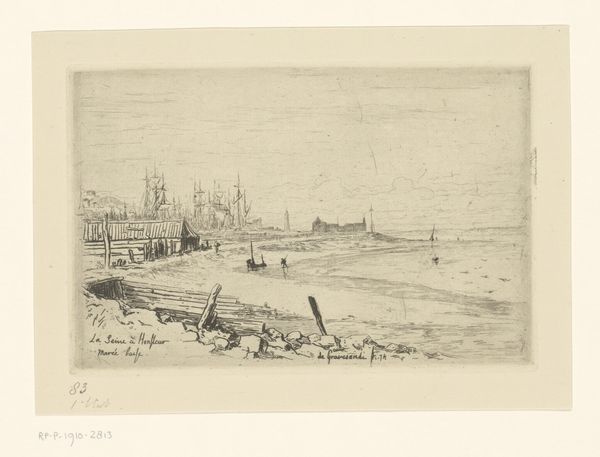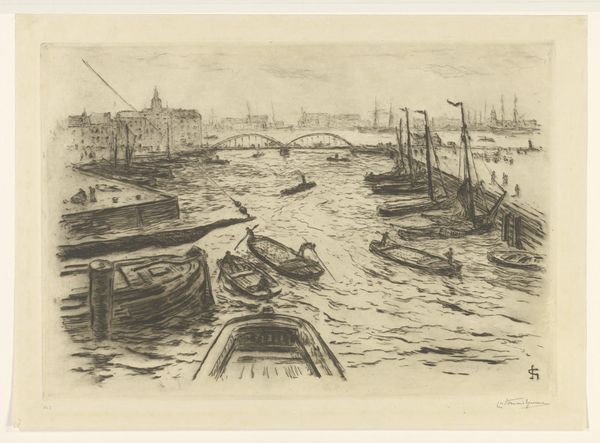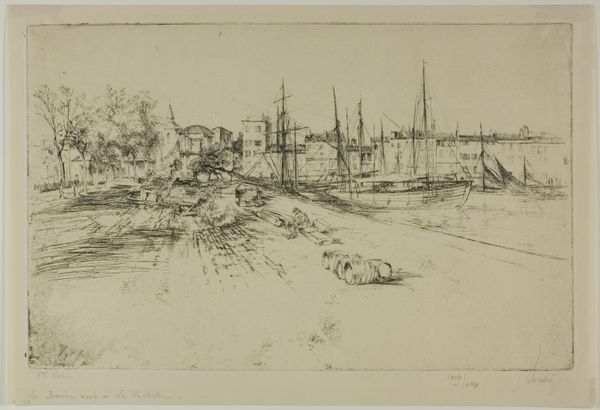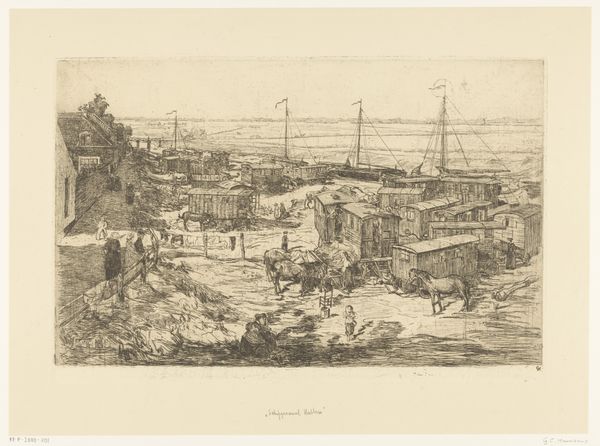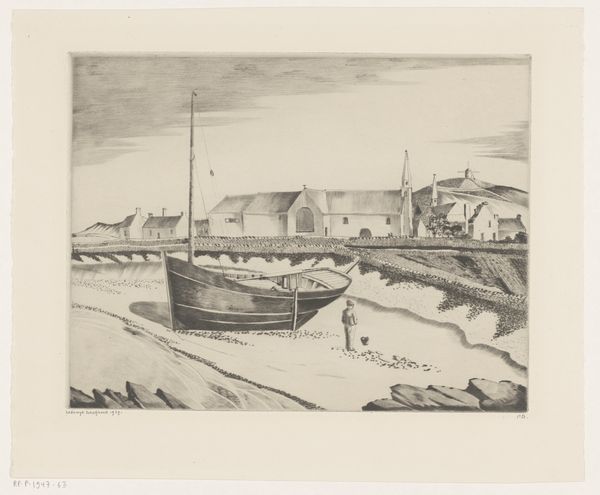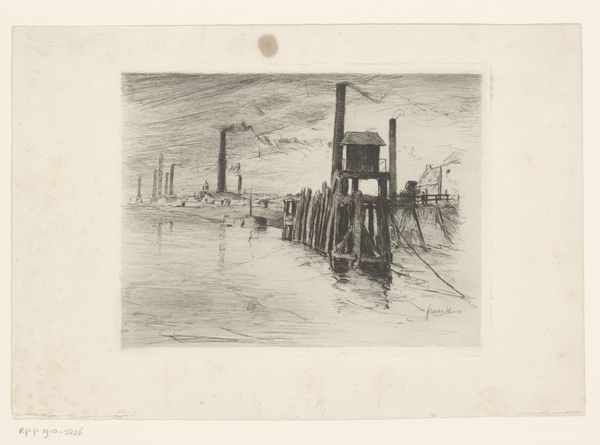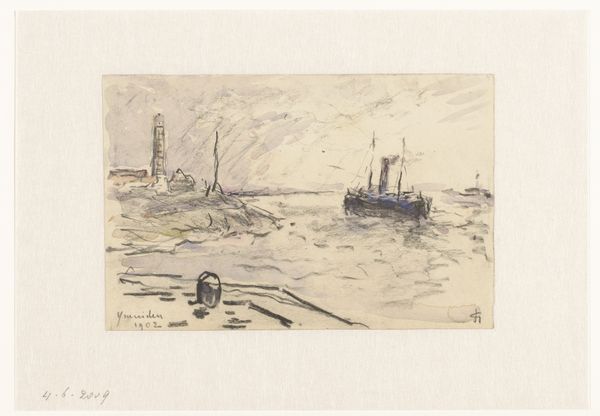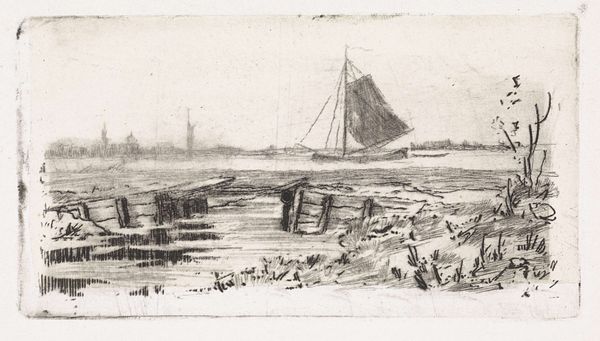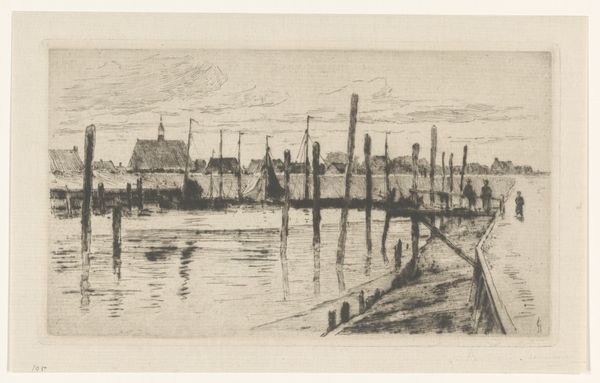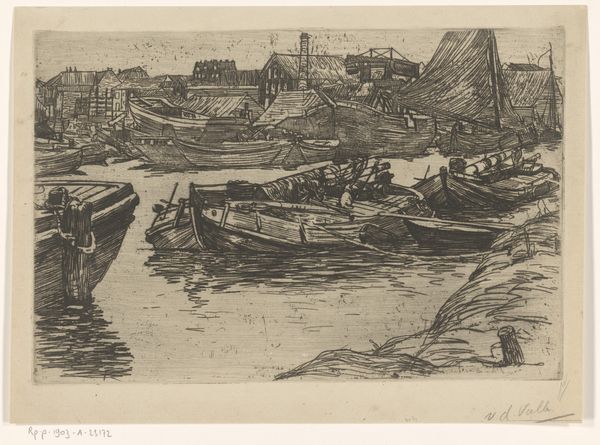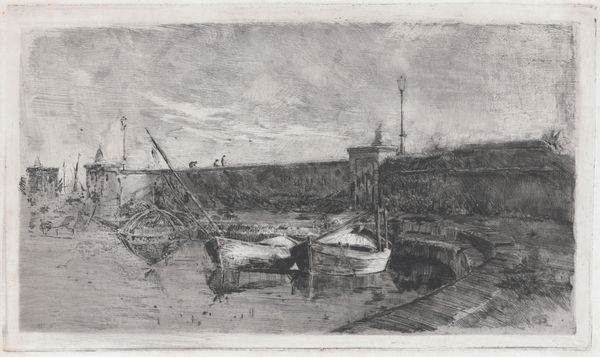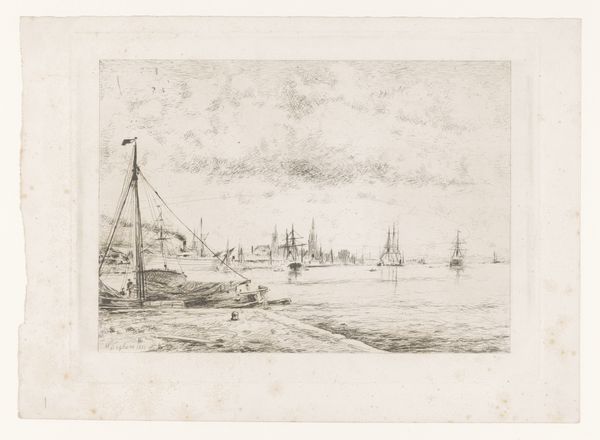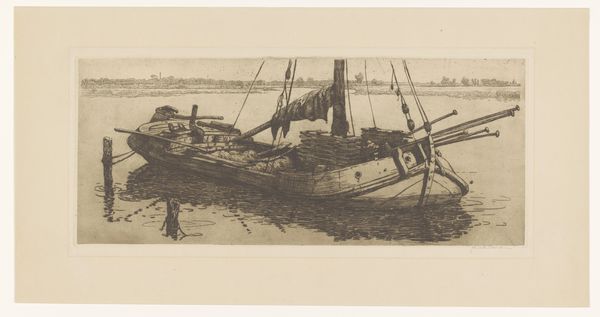
watercolor
#
dutch-golden-age
#
landscape
#
watercolor
#
watercolor
#
realism
Dimensions: height 298 mm, width 469 mm
Copyright: Rijks Museum: Open Domain
Curator: Welcome to the Rijksmuseum. Before us is Wilhelmus Johannes Steenhoff's "Bouwterrein bij het Wilhelmina Gasthuis," a watercolor from 1892. Editor: My first impression is one of muted labor. The sandy foreground dominates, obscuring any real sense of vibrant life. Curator: Absolutely, it presents labor within the constraints of its era. This watercolor serves as a potent document, revealing much about urban development and working conditions at the end of the 19th century in Amsterdam. Consider the materials Steenhoff used – watercolor, a readily available medium – allowing for quick sketches on-site, documenting the rapid transformation of the city. Editor: And observe how those washes create depth and form. The hazy sky, contrasted with the distinct outlines of the cranes and distant buildings, suggests a certain geometric clarity beneath the seemingly haphazard construction site. Steenhoff has composed an industrial scene with considerable rigor. Curator: But the human element isn't romanticized; they're faceless laborers, dwarfed by the scale of construction. We are made to consider their material circumstances and their contributions to building infrastructure. Note the visible texture, suggestive of the unrefined, hands-on work of digging and laying foundations. The artist implicates the audience to observe a shift from pastoral labor to grueling work supporting new city growth. Editor: The tonal harmony, of course, contributes to the overarching melancholy. Those earthy hues create a sense of temporal suspension. Everything exists at an even register of feeling. There are signs and symbols but no index. Curator: I read a certain authenticity, an understated perspective that prompts us to think about what the painting doesn't portray. The viewer must engage, to place the artwork in its social and political setting. Editor: It also speaks about itself. A construction site laid bare – a space for experimentation – and the watercolor laid bare, immediate. This gives insight into how art becomes. Curator: Seeing this artwork in its context— the societal drive to expand, the common worker fueling change—reveals complexities within seemingly unassuming construction in the city. Editor: True, and through Steenhoff's technique, the physical essence of that rapid development emerges as well; how his construction mirrors a structuralist rendering of a shifting city.
Comments
No comments
Be the first to comment and join the conversation on the ultimate creative platform.
